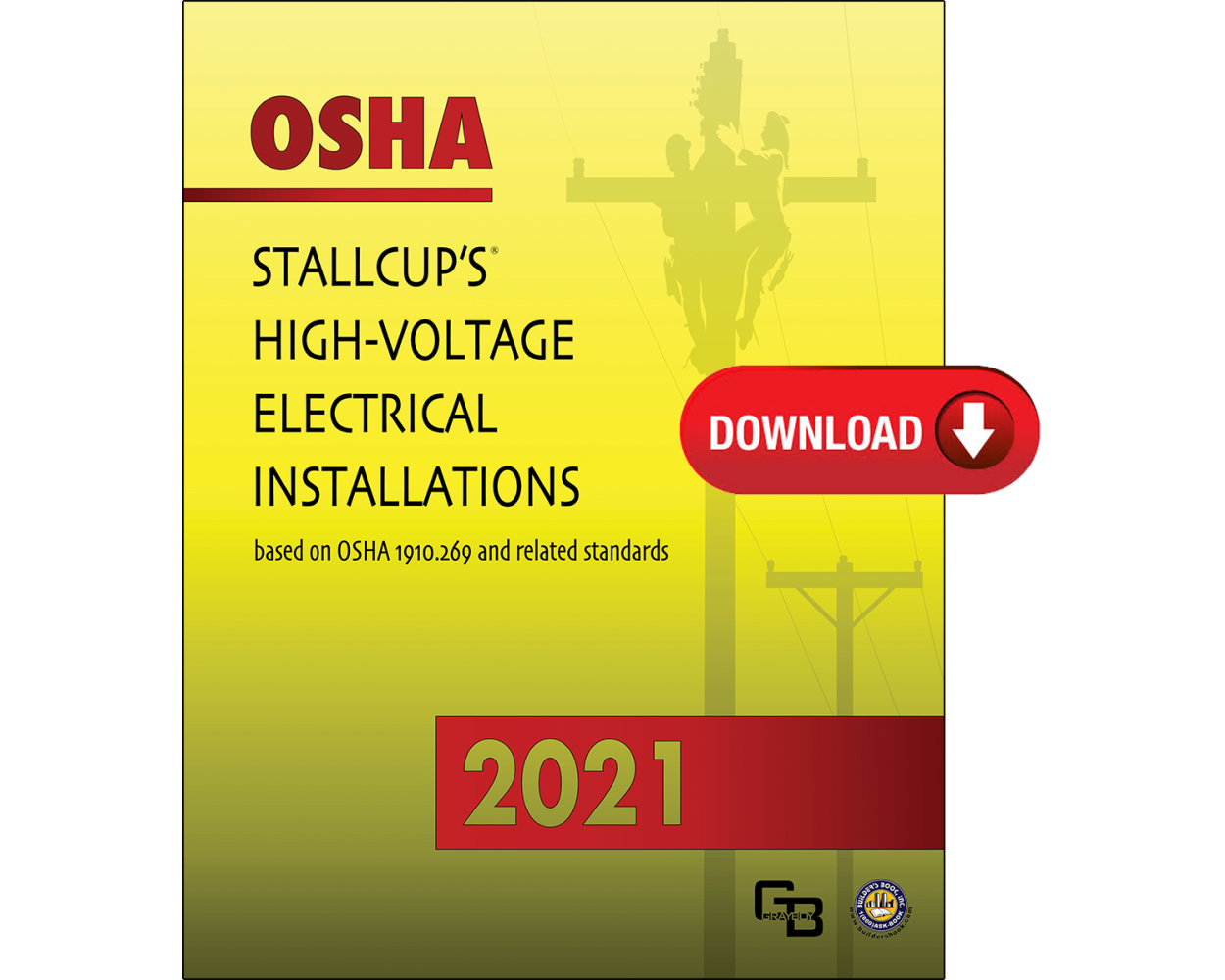2021 OSHA Stallcup's High Voltage Electrical Installations based on OSHA 1910.269
$68.00
In stock
Product Code
2021 OSHA HV DL
2021 OSHA Stallcup's High-Voltage Electrical Installations based on OSHA 1910.269 PDF DOWNLOAD
A comprehensive approach is discussed pertaining to control of the hazards involved for the safety of personnel working near or on such hazards.
To protect personnel from the unique hazards encountered while working on high-voltage systems and associated equipment, the appropriate electrical protective equipment is recommended to ensure such protection.
The rules and regulations outlined (when applied) will significantly reduce the number of fatalities and injuries involving electrical contact, flash burns, and thermal burns as well as other accidents which otherwise would be uncontrolled.
Employer and employees must learn the requirements of Part I which contains Subpart R of OSHA 1910.269. They must implement such rules to provide safety when performing maintenance on high-voltage electrical installations.
Part II covers the grounding of lines and equipment to protect employees from injury should reenergization of the system occurs. Proper grounding provides protection against induced voltages and static charges on a line. These induced and static voltages can be high enough to endanger workers, either directly from electric shock or indirectly from involuntary reaction.
Grounding is a temporary protective measure which involves connecting the deenergized lines and equipment to earth through conductors. As long as the conductors remain deenergized, this maintains the lines and equipment at the same potential as the ground (earth). However, if voltage is impressed on a lines, the voltage on the grounded line rises to a value dependent upon the impressed voltage, the impedance between its source and the grounding point and the impedance of the grounding conductor, which provides a margin of protection for workers.
The grounding of high-voltage lines and equipment will provide additional safety for workers from electrical shock where such grounds are sized, selected and installed properly.
| Price | $68.00 |
|---|---|
| Description | 2021 OSHA Stallcup's High-Voltage Electrical Installations based on OSHA 1910.269 PDF DOWNLOAD A comprehensive approach is discussed pertaining to control of the hazards involved for the safety of personnel working near or on such hazards. To protect personnel from the unique hazards encountered while working on high-voltage systems and associated equipment, the appropriate electrical protective equipment is recommended to ensure such protection. The rules and regulations outlined (when applied) will significantly reduce the number of fatalities and injuries involving electrical contact, flash burns, and thermal burns as well as other accidents which otherwise would be uncontrolled. Employer and employees must learn the requirements of Part I which contains Subpart R of OSHA 1910.269. They must implement such rules to provide safety when performing maintenance on high-voltage electrical installations. Part II covers the grounding of lines and equipment to protect employees from injury should reenergization of the system occurs. Proper grounding provides protection against induced voltages and static charges on a line. These induced and static voltages can be high enough to endanger workers, either directly from electric shock or indirectly from involuntary reaction. Grounding is a temporary protective measure which involves connecting the deenergized lines and equipment to earth through conductors. As long as the conductors remain deenergized, this maintains the lines and equipment at the same potential as the ground (earth). However, if voltage is impressed on a lines, the voltage on the grounded line rises to a value dependent upon the impressed voltage, the impedance between its source and the grounding point and the impedance of the grounding conductor, which provides a margin of protection for workers. The grounding of high-voltage lines and equipment will provide additional safety for workers from electrical shock where such grounds are sized, selected and installed properly. |

